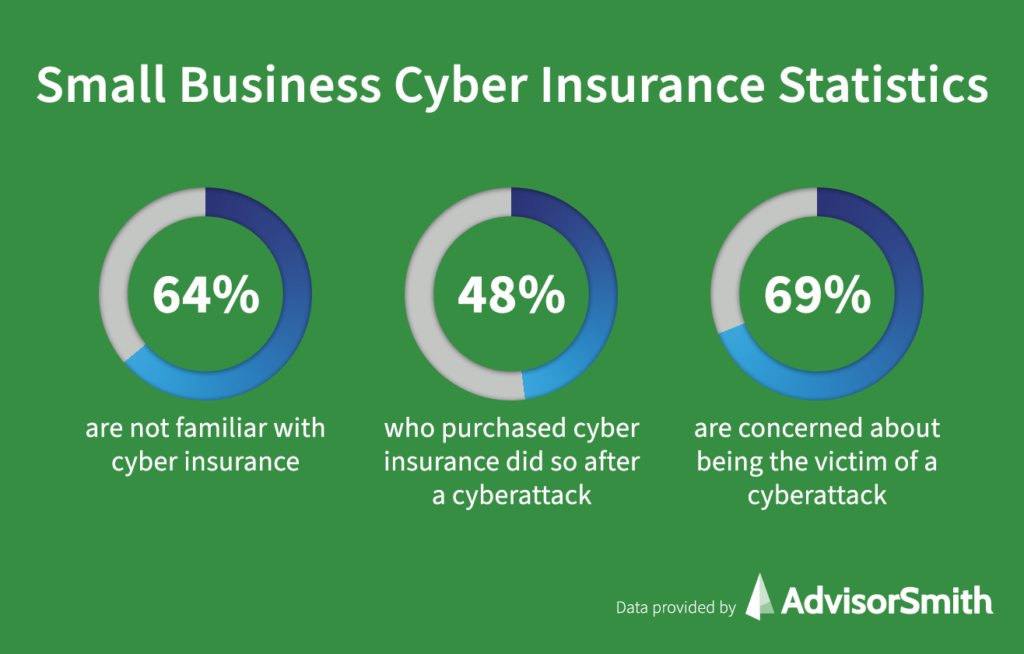The watch industry is an ever-growing market with a compound annual growth rate (CAGR) of 4.45% estimated from 2022 to 2030. By 2030, this could mean a global evaluation of $73.5 million. For newcomers to the market, now is a great time to get started.

This guide offers insight into how to start a watch company. Topics include market research, competitive analysis, registering an EIN, obtaining business insurance, and more. Here’s everything you need to get started building your watch brand.
1. Conduct Watch Market Research
Market research is essential when starting your own watch brand. It offers insight into building a successful watch brand, including details on your target market, local market saturation, trends in services and products, and more.

Some details you might learn through market research for your watches include:
- Rising disposable incomes and demand for luxury goods make the US market highly lucrative for aspiring watch brands.
- There is strong demand for affordable luxury watches priced at $500-$5000.
- Startups have an opportunity to compete in OS-agnostic luxury smartwatches.
Key factors driving market growth include:
- Rising global incomes, especially among Millennials
- Growing consumer interest in luxury mechanical timepieces
- Innovation in smartwatch technology and capabilities
- Increased marketing spending by major brands like Rolex and Omega
- Strong growth in online watch sales
With careful positioning and effective digital marketing, new brands can capture market share. Specialized blogs, social media influencers, and paid ads help drive brand awareness and sales. The pre-owned market also presents a major opportunity. Overall, the diverse watch industry offers ample potential for startups catering to changing consumer preferences in this new age of luxury.
2. Analyze the Competition
Thorough competitive analysis is crucial when entering the watch industry. First, identify direct competitors by searching relevant keywords. Analyze product offerings, pricing, target customers, brand messaging, and marketing channels.
Some ways to get to know competitors that sell watches online or in person include:
- For online brands, use tools like SEMrush and SpyFu to analyze their SEO and PPC strategies.
- Learn which keywords they target, their ad spend, landing pages, and conversion funnels.
- Read customer reviews to identify brand perceptions and pain points.
- For retailers, research their store locations, product selection, promotions, and services.
- Visit stores to evaluate layout, merchandising, staff expertise, and overall shopping experience. Even pawn shops or flea markets are good locations to check because you might gain some insight into what customers with a potentially smaller budget are buying.
- Analyze competitors’ social media and web presence.
- Evaluate their content strategy, engagement levels, influencer collaborations, and overall brand building. This provides ideas for your digital marketing approach.
- Study competitors’ partnerships with suppliers, distributors, and retailers. Learn their sales and distribution strategies.
- Identify opportunities to foster strategic partnerships.
- Evaluate brand positioning and messaging.
Ongoing analysis lets you respond to competitor innovations and changing consumer expectations. Leverage tools like Google Alerts and Social Mention to monitor relevant news and conversations across channels.
3. Costs to Start a Watch Business
Starting a watch brand requires significant upfront investment. Some of the business expenses you’ll encounter as you launch a smart watches business include the following.
Start-Up Costs
- Product Design & Development – $50,000 to $500,000: Creating unique watch designs and having prototypes manufactured can cost tens of thousands to several hundred thousand dollars depending on factors like movement complications and materials.
- Branding & Marketing – $15,000 to $100,000: Brand strategy consulting, logo design, setting up a website, and initial marketing activities like photo shoots and social media ads can run $15k on the low end to over $100k for a thorough brand launch.
- Legal & Accounting – $5,000 to $15,000: Business formation, trademarks, accounting software, legal counsel, and permits/licensing will likely cost between $5k to $15k.
- Inventory – $50,000 to $500,000: Minimum order quantities from manufacturers are often in the hundreds or thousands of units. With average wholesale prices of $100 to $2,000 per watch, obtaining adequate initial inventory requires capital in the tens to hundreds of thousands.
- Fulfillment & Shipping – $5,000 to $20,000: Order processing systems, packaging materials, and initial product shipments need to be financed before sales revenue starts coming in.
- Total Start-Up Costs: $125,000 to $1,000,000.
Ongoing Costs:
- Facilities – $2,000 to $15,000/month: Renting office and warehousing space can easily cost a few thousand per month. Purchasing can run $100k to millions.
- Staffing – $8,000 to $60,000/month: Employing a small team for operations, marketing, sales, and customer service may range from $8k/month for a few employees to over $60k for a more robust headcount.
- Inventory Replenishment – $50,000 to $500,000/year: Regularly replenishing sold inventory requires significant cash flow, especially when selling directly to consumers.
- Marketing – $5,000 to $500,000+/month: PPC ads, SEO, social media marketing, influencer partnerships, and PR outreach to drive ongoing sales may cost thousands to hundreds of thousands per month.
Other recurring costs like accounting, legal, insurance, transportation, utilities, and other overhead expenses can easily total tens of thousands per year.
4. Form a Legal Business Entity
A watch business sells watches, and that means you need to form a legal business entity. There are four main entities to choose from, let’s break them down here.
Sole Proprietorship
A sole proprietorship is the simplest business structure where you own and operate the business as an individual. There is no legal separation between you and your business.
- Pros: Extremely easy and inexpensive to form; complete control over all decisions; all profits flow directly to you.
- Cons: Unlimited personal liability – your assets are at risk for any business debts or lawsuits; limited access to financing since you can only fund the business from your resources or personal loans; limited ability to attract talent by offering ownership stakes.
Given the major upfront capital requirements and liability risks involved in launching a watch brand, operating as a sole proprietorship poses too much financial exposure for most entrepreneurs.
Partnership
A partnership involves two or more people co-owning and operating a business together. Partners combine their resources and split profits/losses based on predetermined ownership percentages.
- Pros: Relatively easy to establish; the partnership enables contributing more startup capital, specialized skills, and complementary expertise.
- Cons: Partners have unlimited personal liability just like sole proprietors; challenges can arise involving decision-making, profit-sharing, accountability, and resolving disagreements; partners are jointly and severally liable for each other’s actions.
While helpful for accessing more startup capital and knowledge, the lack of liability protection remains an issue for capital-intensive watch ventures. Disagreements between partners can also jeopardize the business.
Limited Liability Company (LLC)
LLCs are flexible business structures that limit owners’ liability and allow pass-through taxation. Ownership is determined through membership units instead of shares of stock.
- Pros: Personal assets are protected from business debts and lawsuits; the separate legal entity provides enhanced credibility; pass-through taxation avoids double taxation on profits; membership units allow flexible division of ownership stakes.
- Cons: Requires more paperwork and formalities than sole proprietorships; most states limit the lifespan of LLCs unless steps are taken to continue them.
For aspiring watch brands, the liability protection afforded by LLCs is crucial when substantial inventory, equipment, retail space, and other startup costs are required. The flexible ownership structure also facilitates attracting outside investors and recruiting top talent with equity-based incentives.
Corporation
Corporations are separate legal entities owned by shareholders who purchase shares of stock. Owners’ assets are protected from business liabilities.
- Pros: Shareholders have limited legal liability for business debts and lawsuits; increased access to startup and growth capital through the sale of company stock; corporations have an unlimited lifespan.
- Cons: More complex and expensive formation process involving articles of incorporation, bylaws, and other documentation; profits are subject to corporate income taxes, and shareholder dividends are taxed again at the individual level – referred to as double taxation; extensive record-keeping and reporting requirements.
While the ability to raise substantial capital through issuing stock makes corporations advantageous for some large, complex businesses, the bureaucratic management structure and double taxation on profits make it a less ideal choice for most new watch brands compared to the flexibility and pass-through taxation of LLCs.
5. Register Your Business For Taxes
An Employer Identification Number (EIN) is a unique 9-digit number that identifies your business for tax purposes. The IRS uses EINs to track tax returns, payments, and other required reporting.
Obtaining an EIN is required when forming any type of official business entity beyond sole proprietorship. This includes corporations, partnerships, and limited liability companies (LLCs). An EIN is vital for watch companies to open business bank accounts, apply for licenses and permits, hire employees, and complete their tax filings.
The easiest way to get an EIN is through the quick online application on the IRS website. To begin:
- Navigate to the EIN Assistant and select “View Additional Types, Including Tax-Exempt and Governmental Organizations”
- Choose the entity type that matches the formation you chose for your watch business.
- Complete the short online form with details like the official legal name and address of your business.
- Print or save the confirmation containing your new EIN once approved.
There is no fee to obtain an EIN. The entire process can be completed in just a few minutes. The EIN is issued immediately upon completing the online form.
Don’t forget sales tax requirements for physical operations and selling products in your state and locality. Register with the state taxation department to obtain any required seller’s permit, sales tax ID, and business license.
6. Setup Your Accounting
Proper accounting is crucial for any watch business to track finances, remain tax-compliant, and make smart strategic decisions. With large upfront investments in product design, inventory, equipment, marketing, and more, careful financial management is vital.

Accounting Software
Using accounting software like QuickBooks streamlines recording income and expenses. Features like invoicing, profit/loss statements, balance sheets, and tax preparation make financial management seamless. Integrations with bank accounts, credit cards, and sales channels provide real-time tracking. This automation provides invaluable financial visibility.
Hire an Accountant
Hiring an accountant provides expertise to ensure accounting accuracy and tax compliance. Services like bookkeeping, payroll, inventory costing, reconciliations, and financial statement preparation are extremely helpful. Expect to invest around $200 – $500 per month for basic bookkeeping or $2,000 – $7,000 to fully outsource accounting operations.
Open a Business Bank Account
Keeping personal and business finances completely separate is critical. Open a dedicated business checking account and credit card solely for company transactions. Never comingle personal and business funds. This makes accounting clean and avoids tax hassles.
Apply for a Business Credit Card
Applying for a business credit card helps build a credit history and provides flexibility in financing larger purchases specific to the business. Credit limits are based on business revenue, assets, and the owner’s credit score. Expect starter limits around $1,000 – $10,000. Usage is also reported to business credit bureaus.
7. Obtain Licenses and Permits
Before opening for business, every watch manufacturer must acquire all required federal, state, and local licenses and permits. Find federal license information through the U.S. Small Business Administration. The SBA also offers a local search tool for state and city requirements.
Common licenses include:
- Business License – Most cities and counties require a general business license to operate within their jurisdiction. These verify compliance with zoning regulations and that all appropriate permits are obtained. Fees are typically under $100 annually.
- Seller’s Permit – For manufacturing or selling tangible products, a seller’s permit or sales tax license is essential to collect and remit state sales tax on transactions. Sales tax rates vary by state. Applications are completed through state revenue departments.
- Food Establishment Permit – For retailers serving beverages or snacks, a food handling permit ensures proper food safety and hygiene regulations are followed. Local health departments oversee the application process.
- Liquor License – Watch retailers planning to serve beer, wine, or spirits must obtain a liquor license stipulating acceptable beverage service practices. State alcohol control boards regulate these licenses.
- Trademark Registration – Registering your watch brand’s name, logos, and designs as trademarks protects them from unauthorized usage. The US Patent and Trademark Office handles federal trademark registrations.
Common permits include:
- Building Permits – Construction permits from local building departments regulate any new building construction or renovations to ensure adherence to zoning, building, safety, and accessibility codes.
- Fire Safety Permits – Occupancy permits from fire marshals verify a commercial property meets fire prevention and response requirements with installed suppression systems, extinguishers, alarms, and emergency exits.
- Environmental Permits – Watch manufacturing operations involving chemicals or hazardous materials must obtain permits stipulating proper handling, storage, and disposal practices to avoid environmental contamination.
Navigating the nuances of business licensing and permitting can be tricky for new entrepreneurs. Working with a business lawyer ensures you obtain all necessary approvals before opening your watch company. Taking these essential steps helps your brand operate safely, legally, and successfully right from the start.
8. Get Business Insurance
Obtaining adequate business insurance is highly recommended to protect watch companies from catastrophic losses. Without proper coverage, a single incident could destroy everything you’ve worked to build.

Insuring your business against risks such as property damage, inventory loss, and liability claims can save your company should disaster strike.
Some essential policies to consider include:
- Property insurance covers damage from events like fire, theft, vandalism, and natural disasters.
- Product liability insurance covers injuries or property damage caused by any faulty or defective products, which is crucial given the intricate engineering of watches.
- Commercial general liability insurance handles legal claims arising from alleged negligent actions, including any committed by employees.
- Business interruption insurance helps compensate for income lost if forced to temporarily halt operations after an incident.
Moving forward without business insurance threatens the very survival of your watch venture. For example, a fire could destroy your retail store and all on-site inventory. Without coverage, you’d be forced to personally finance the full costs of rebuilding and restocking.
If a faulty watch band breaks and injures a customer’s wrist, you’d have to pay their injury claims entirely out of your pocket without protection. And if key manufacturing machinery broke down, halting production for weeks, you’d miss out on sales and profits without business interruption insurance to help fill the gap.
9. Create an Office Space
Having a dedicated office space provides watch ventures with a professional home base for handling essential business tasks. An office enables activities like inventory and order management, customer service, branding and marketing efforts, accounting, and strategic planning. It also gives employees a centralized hub for collaboration.
Home Office
Working from a home office minimizes overhead. With basic furnishings and equipment, a spare room can become a functional workspace for 1-2 people. However, home offices lack separation between work and personal life and have limited room for growth. Expect costs of around $2,000 for basic furnishings and electronics.
Coworking Space
Coworking spaces like WeWork provide an affordable office environment by housing multiple businesses under one roof. Open layouts promote community and flexibility. Coworking spaces also provide amenities like WiFi, conference rooms, and kitchens without large upfront investments. Average monthly fees range from $200 – $500 per dedicated desk.
Retail Office
For watch brands with a storefront, office space may be available on-site or nearby. This provides convenience for store staff and inventory management. However retail locations limit privacy. Expect average rents around $30/sq ft in commercial areas.
Commercial Office
Leasing traditional office space provides the most professional setting for watch ventures, especially when scaling. Commercial offices offer privacy and customizability lacking in other options. However, costs are much higher, with average rents of $20 – $35 per square foot.
10. Source Your Equipment
Launching a watch brand requires specialized equipment for designing, manufacturing, and selling timepieces. Here are the top options for obtaining the necessary tools cost-effectively:
Buying New
Purchasing brand-new equipment from manufacturers or dealers allows customizing capabilities and features. However, costs are highest when buying directly. Look to companies like Audemars Piguet and Rolex for advanced watchmaking machinery. Expect to invest $10,000+ for high-precision lathes, mills, and laser engravers.
Buying Used
Buying gently used equipment can offer major cost savings. Check auction/liquidation sites like Heritage Global Partners, which frequently lists watchmaking machines from plant closures. eBay and Craigslist also post used equipment at 50-80% discounts. Confirm condition and maintenance records on used purchases.
Renting
Renting equipment enables accessing sophisticated tools without huge upfront capital. For example, American Micro Industries rents laser engraving systems starting at around $200/month. This preserves capital for inventory and marketing while still obtaining the necessary capabilities.
Leasing
Leasing also lets you spread equipment costs over time. Typical lease terms range from 12 to 48 months. Payments are fixed monthly, and newer equipment may be accessible. However, leasing still has interest charges like financing and you won’t own the equipment after making payments.
11. Establish Your Brand Assets
Developing a strong brand identity is crucial for watch companies to stand out and become recognizable in a crowded market. This starts with securing foundational assets that present a consistent, professional image.
Get a Business Phone Number
Having a dedicated business phone number adds legitimacy versus using a personal cell. Services like RingCentral make getting a local or toll-free number easy, with call management features like voicemail transcriptions.
Design a Logo
Creating a distinctive logo and supporting brand assets gives your watch company visual recognition. Consider symbols that reflect your heritage and values. Logo makers like Looka offer high-quality designs adapted for websites, products, and marketing materials.
Print Business Cards
Business cards are still essential for networking and sales. They enable quick sharing of your watch brand’s phone number, website, and other contacts. Vistaprint provides affordable, high-quality card printing with many template options.
Design a Professional Watch Company Website
Your website establishes your brand’s online presence. Users will judge credibility quickly based on design and content quality. Options include DIY builders like Wix for custom sites without coding skills needed. Alternatively, hiring web developers on freelance marketplaces like Fiverr can create more advanced, custom-coded designs.
Obtain a Domain Name
Every online watch brand retailer needs a unique domain name. Securing a domain name matching your watch brand name boosts search visibility and reinforcement. Aim for .com availability, short length, and easy spelling/memorability. Domain registrars like Namecheap make registration fast, secure, and affordable.
12. Join Associations and Groups
Joining relevant local organizations and online communities provides invaluable connections and insights for aspiring watch entrepreneurs.
Local Associations
Many cities have jewelers associations or watchmaking guilds. For example, the Chicago Jewelers Association offers networking, education, and advocacy for Chicago jewelers. The American Watchmakers Institute unites watchmakers nationwide. Local groups like these enable meeting fellow artisans and learning industry best practices.
Local Meetups
Attending watch or jewelry meetups helps build local connections. Sites like Meetup make finding relevant events easy. Try searching for combinations like “watchmaking meetup” and your city. Interacting in person facilitates sharing advice and forming collaborations. Don’t miss major regional trade shows where many vendors congregate.
Facebook Groups
Facebook groups connect you with fellow watch enthusiasts and brands globally. The Amateur Watchmaking group discusses techniques and advice. The Cartier Watches & Watchmaking Passion group reviews watchmaking hobbies and Cartier-style designs. The Ladies Luxury Watches group caters to female aficionados. Share knowledge and get feedback by joining communities aligned with your niche.
13. How to Market a Watch Business
Implementing an effective marketing strategy is essential for watch brands to build awareness and drive sales. While quality products are important, you must still actively promote your business to succeed.
Personal Networking
Leveraging your personal and professional networks is invaluable when first launching. Word-of-mouth referrals from satisfied customers often convert best. For example, offer a 10% discount code for future purchases to happy customers willing to tell friends and family about your watches.
Ongoing marketing should utilize both digital and traditional tactics to maximize reach.
Digital Marketing
For digital marketing, focus on strategies like optimizing your website for relevant search engine queries so you rank highly in results when people search for terms related to your products.
- Pay-per-click advertising through platforms like Google Ads and Bing Ads allows precision targeting of local consumers actively shopping for watches online.
- Promoting visually engaging content on social media sites like Instagram and Facebook performs well for watch brands.
- Retargeting ads that follow site visitors around the web remind them to return and complete purchases.
- Email marketing with segmented campaigns promotes new product launches, special promotions, and loyalty programs.
- Affiliate partnerships with relevant blogs and influencers can earn commissions promoting your watches to their audiences.
- Ensure your website itself converts visitors well through compelling product descriptions, clear calls-to-action, trust factors, and streamlined checkout.
Traditional Marketing
For traditional marketing, consider print advertisements in local magazines and newspapers focused on gift-giving times like engagements and holidays when watch sales spike.
- Billboards along highways and busy roads raise general brand awareness.
- Radio spot ads discuss current promotions and limited-time offers.
- Direct mail postcards sent to high-income ZIP codes announce new collections or VIP events.
- In-store merchandising with local retailers includes displays and samples to attract foot traffic.
- Consider sponsoring local events related to business or arts/culture as a networking and promotion opportunity.
A strategic combination of digital and traditional marketing enables nurturing leads at every stage of their purchase journey. Dedicate sufficient budget and resources to market creatively, consistently, and effectively at scale.
14. Focus on the Customer
Providing exceptional customer service is crucial for watch brands to foster loyalty, generate referrals, and drive repeat sales. Some ways to improve customer service as you create limited edition watches include:
- Responding quickly to pre-sale de becomes integral to the watch itself in owners’ minds.
- Providing an incredible end-to-end journey from discovery to aftercare earns loyal ambassadors who proudly share your brand story.
- Word-of-mouth is powerful – consistently exceeding customer expectations drives growth exponentially more than any advertisement ever could.
- Sending thank you cards by mail, not just email for an added personal touch.
- Reaching out for birthdays and special occasions to remind customers of your watch brand as a gift (or part of a gift basket) for the occasion.
This guide has covered a variety of helpful tips for starting a watch company. Customer service is a critical step in developing your brand and building brand loyalty. As you get to know your target market, customer focus gets easier.
